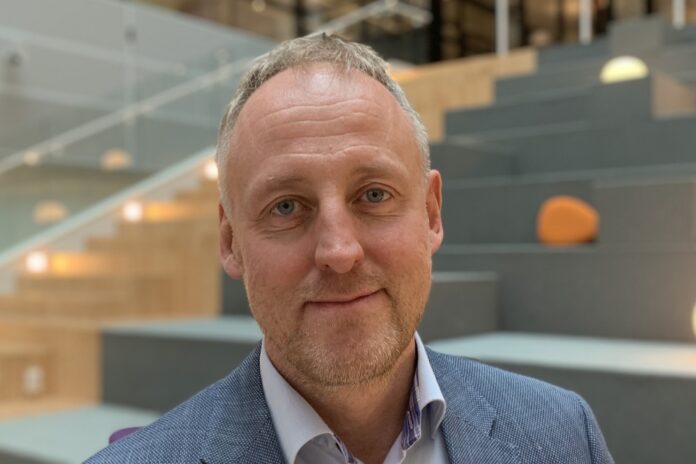Staffan Åkesson joined Telia Sweden, which describes itself as the leading provider in all areas of the Swedish telecom market, in 2015. Its services are marketed under the brands Telia, Halebop, Fello, TV4, C More and Cygate.
What is the biggest issue on your mind now?
The pandemic showed just how critical our networks are to lives and livelihoods. I am proud of how our organisation and network coped with this difficult situation, avoiding disruptions and delivering on our commitments to customers and society. Telia was again selected as the best mobile network in Sweden by the independent benchmarking company Umlaut – for the fourth year in a row. My priority now is to make sure we continue to have the best networks in Sweden. We will modernise our entire mobile network, doubling the capacity in the 4G network and deploying 5G, which, when complete, will cover 90% of Sweden and 99% of our population.
Who most influenced your career?
I have worked with exceptionally talented people throughout my career and have tried to pick up a few successful practices from the best of them, so my toolbox is rather diverse at this stage.
What is the most important lesson you have learned professionally?
In our industry quality and trust are important. I think it is important to be in the game for the long run. Short-term wins and shortcuts might be tempting at times, but tend to come back and bite you, just like in personal relationships. Your supplier today might be your customer tomorrow, your subordinate today might be your boss tomorrow, so treat everybody with respect, no matter what relationship you have.
What will 5G’s main uses be to begin with?
In addition to enhanced mobile broadband, 5G will enable fast and stable broadband connections to more places and people, commonly referred to as fixed wireless access. This type of broadband service is especially relevant to a market like Sweden, where 80% of the households already have access to fibre, but the remaining 20% are too costly or complex to reach that way.
How will 5G’s role change over time?
Over time 5G will become an important platform for innovative new types of digital services requiring high bandwidth, low latency, and robust and secure mobile connectivity. For the last six years or so we have built an ecosystem with academic institutions, the public sector and partners like Ericsson, Boliden, Hitachi ABB, Volvo CE and others to explore how 5G can be used to connect applications and digitalise processes in a range of industries, from mining and manufacturing to transportation and healthcare.
Where are you now with 5G?
The results we have seen so far are encouraging. We have seen how smarter ways of working and automation in manufacturing and mining can improve efficiency and safety; how self-driving technology and electrification can contribute to cleaner and more sustainable transportation of goods and people; how 5G-connected equipment like drones and mobile mammogram units can move healthcare closer to patients.
We are at the very beginning of these developments, but imagination is the only limiting factor. As consumers, we will see more advanced services for smartphones and other devices. Gaming and live entertainment – concerts and sport – will be changed by 5G in coming years.
What do you consider your greatest professional achievement?
Great achievements in our industry are always the result of great teamwork.
How has the pandemic changed your own perspective and goals, and those of your company?
The pandemic has reinforced the importance of digital infrastructure in society and it has strengthened our mission to provide high quality connectivity to all, through fibre, 4G/5G or fixed wireless access. It is equally important to know how to use digital services and we contribute to society through dedicated programmes for senior citizens and small enterprises to bridge competence gaps.
What single recommendation would you make to your peer group of CTOs?
The legacy and context in each market is very different, so I do not have any general recommendations, but each CTO must understand the present, learn from the past and envision the future in their specific situation.
What do you like to do when you’re not working?
As my kids are now growing up, I have more time for personal interests. The skiing season is coming to an end, but last weekend was the start of the kitesurfing season, so I am hoping for strong winds.


